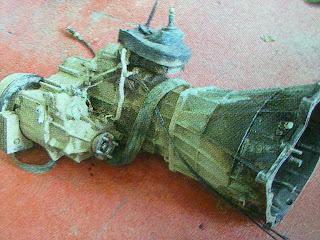With the transmission out of the way, it’s a quick and simple job to unbolt the clutch assembly and lift off the clutch cover \pressure plate and the fiction disc. After removing the plates, examine them for damage which may show evidence of problem with other components. It’s also important to confirm way the clutch needed replysmant. The usual reason is because it has started slipping. But check the old friction disc to confirm that it really has warn down that far. If not, the diaphragm spring in the purser plate may have become weak, and that can produce slip or judder. Because either component can cause. Symptoms, its standard practice to renew both, and also the clutch release bearing (the three item being sold as a clutch kit) whenever the system fail. If the friction material on the clutch disc is warn down to the reverts (a slipping clutch would have to be abused for a long time to achieve this) check for scoring on the flywheel if damaged, fit a new one.
Also, look for signs of burning the on the friction plate, flywheel face and pressure plate face. That’s usually the result of hard use, such has heavy towing or difficult manoeuvring on a gradient. You may have smelled the clutch friction material burning when that happened and there may be a blue ish tint on the flywheel and pressure plate faces. If that sort of heavy use is typical, consider fitting a heavy duty clutch kit. Overheating of the clutch plate can use clutch judder when moving off evidenced by hot spot mark on the plate. If there are signs of burnt oil on the clutch plate, or in the gearbox bell housing. The Td5’s R380 gearbox had a problem with oil leaking via the input shaft oil into the bell housing. The oil should drain straight out, unless a wading plug is left in. The seal has since been improved.

No comments:
Post a Comment